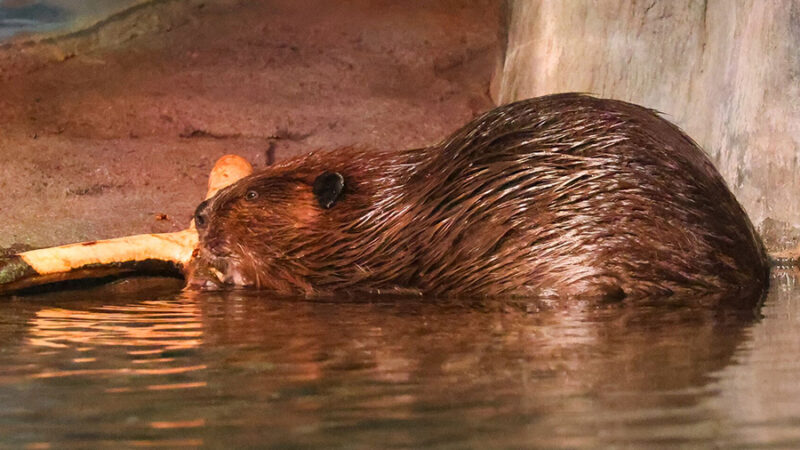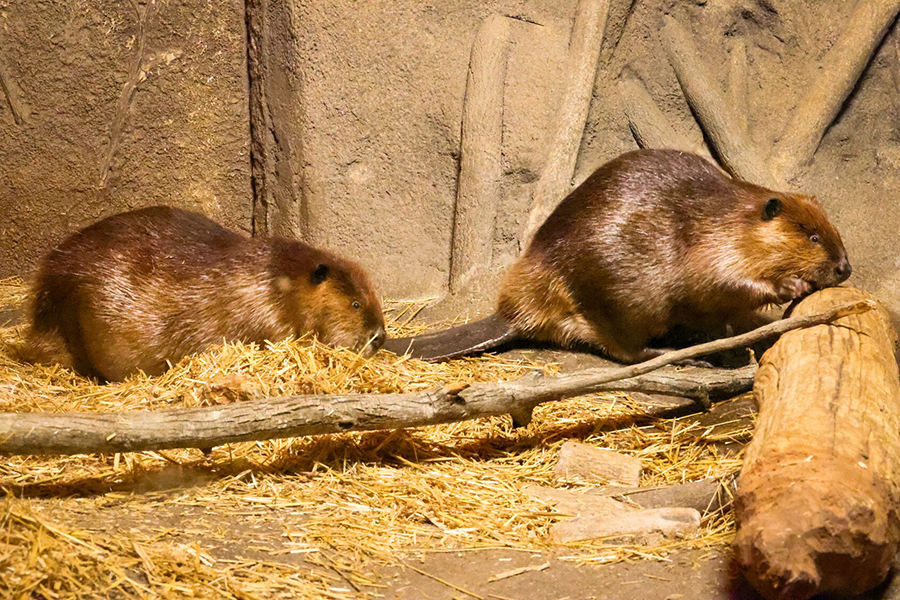American Beaver

- Common Name: American Beaver, North American Beaver
- Scientific Name: Castor canadensis
- Diet: Tree bark, leaves, roots, and other wetland plants
- Range: All areas of North America except the dry desert ares of the Southwest United States.
- Size: 3 to 4 feet and 34 to 70 lbs.
- Lifespan: 10 to 12 years
IUCN Red List Status: Least Concern
Least Concern
Overview
The American Beaver is a large, semi-aquatic rodent renowned for its ability to transform landscapes. As one of nature’s most skilled engineers, it builds dams and lodges that create wetlands, benefiting countless other species. Its ecological impact makes it a keystone species in freshwater environments across North America.
Geographical Distribution and Habitat
American beavers are found throughout most of North America, from northern Mexico to Canada and Alaska. They are absent only from the deserts of the southwestern United States. These animals thrive in freshwater environments such as rivers, streams, ponds, and lakes. They construct dams to slow water flow and create ponds, where they build lodges for shelter and protection. These structures help regulate water levels, reduce erosion, and support biodiversity.

Diet
Beavers are herbivores with a diet that changes with the seasons. They feed on the bark and cambium of trees like willow, birch, maple, and aspen. They also consume aquatic plants such as water lilies and cattails, along with leaves twigs, and roots. During winter, they rely on food caches stored underwater near their lodges.
Fun Facts
- These animals are the largest rodents in North America.
- Beavers can stay underwater for 15 minutes before needing to come back to the surface.
- They have transparent eyelids that serve as goggles underwater, allowing them to see clearly while submerged.
- Their front teeth never stop growing and are kept sharp through constant gnawing.
Learn About Other Animals
Swamp at Night
No other animals are currently listed for this exhibit.
